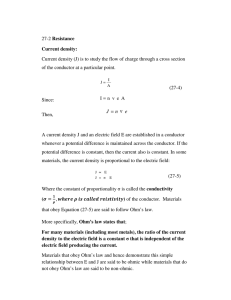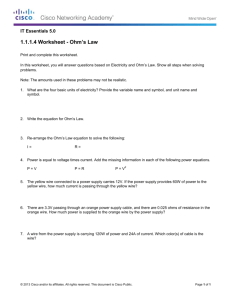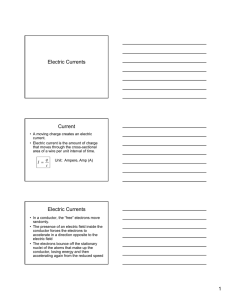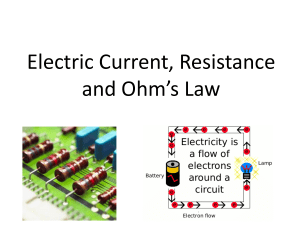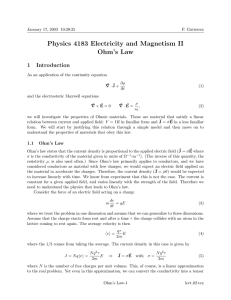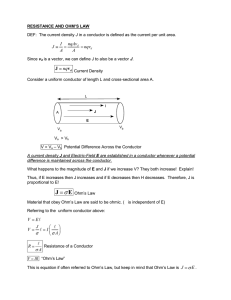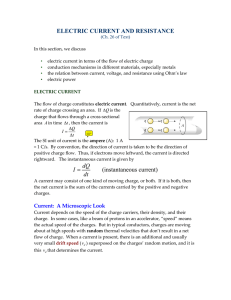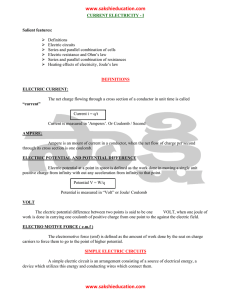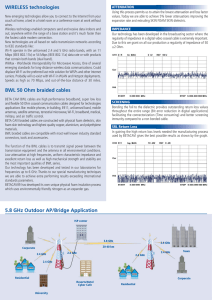Introduction to Ohm`s Law - 1 - Physics Mantra
advertisement
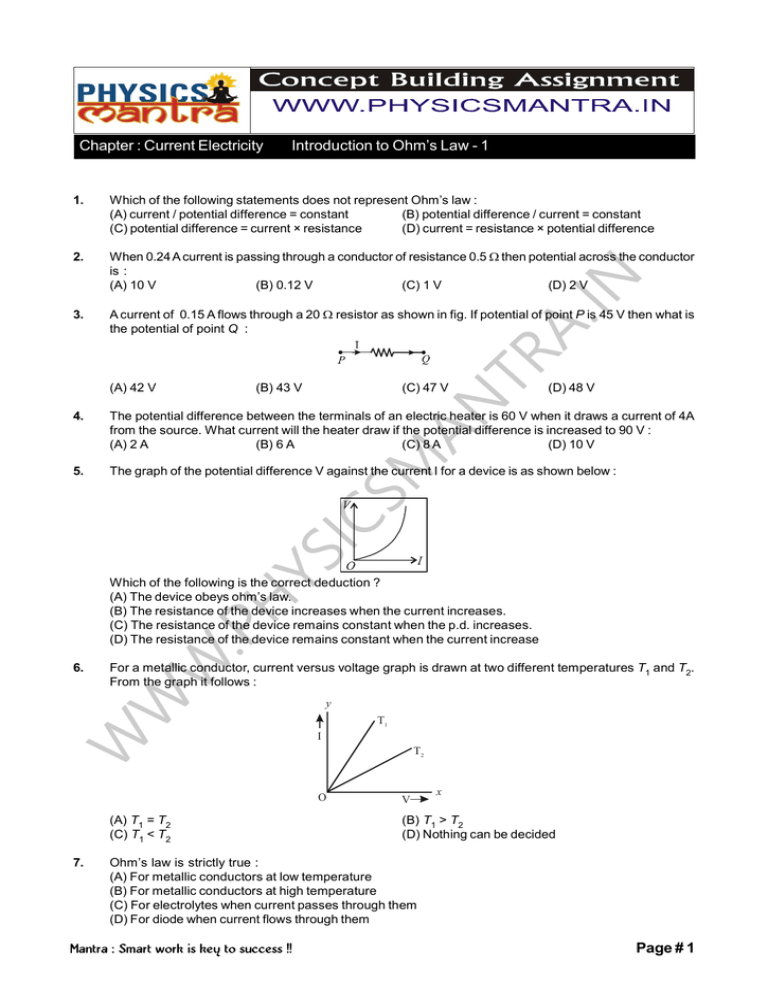
Chapter : Current Electricity 1. 2. 3. Which of the following statements does not represent Ohm’s law : (A) current / potential difference = constant (B) potential difference / current = constant (C) potential difference = current × resistance (D) current = resistance × potential difference When 0.24 A current is passing through a conductor of resistance 0.5 then potential across the conductor is : (A) 10 V (B) 0.12 V (C) 1 V (D) 2 V A current of 0.15 A flows through a 20 resistor as shown in fig. If potential of point P is 45 V then what is the potential of point Q : (A) 42 V 4. 5. Introduction to Ohm’s Law - 1 (B) 43 V (C) 47 V (D) 48 V The potential difference between the terminals of an electric heater is 60 V when it draws a current of 4A from the source. What current will the heater draw if the potential difference is increased to 90 V : (A) 2 A (B) 6 A (C) 8 A (D) 10 V The graph of the potential difference V against the current I for a device is as shown below : Which of the following is the correct deduction ? (A) The device obeys ohm’s law. (B) The resistance of the device increases when the current increases. (C) The resistance of the device remains constant when the p.d. increases. (D) The resistance of the device remains constant when the current increase 6. For a metallic conductor, current versus voltage graph is drawn at two different temperatures T1 and T2. From the graph it follows : y I 7. (A) T1 = T2 (C) T1 < T2 O T1 T2 V x (B) T1 > T2 (D) Nothing can be decided Ohm’s law is strictly true : (A) For metallic conductors at low temperature (B) For metallic conductors at high temperature (C) For electrolytes when current passes through them (D) For diode when current flows through them Page # 1 8. The example for non-ohmic resistance is : (A) Copper wire (B) Carbon resistance 9. Resistance of a conductor, whose V.I. curve is shown is : (A) 0.001 10 . 1. (D) (B) 10 (C) Diode (C) 100 (D) Tungsten wire (D) 1000 Choose correct option : (A) Ohm’ s law is an universal law. (B) Area under V-I graph plotted for a metallic conductor gives its resistance. (C) Ohm’s law is not applicable to semiconductors. (D) According to ohm’s law I R 2. (B) 3. (A) ANSWER KEY Physics (Introduction to Ohm’s Law - 1) 4. (B) 5. (B) 6. (C) 7. (A) 8. (C) 9. (D) 10. (C) Page # 2


